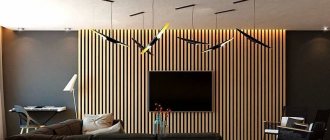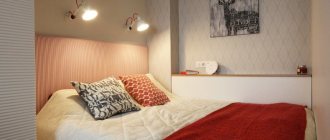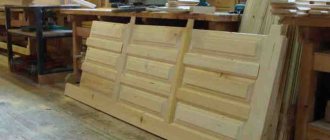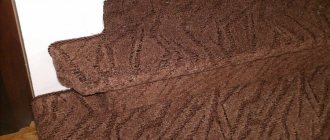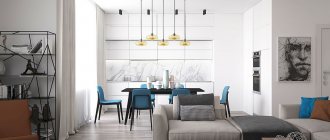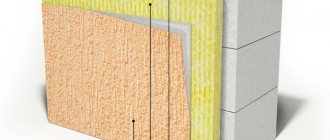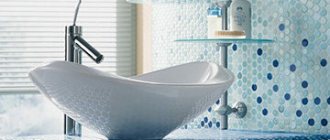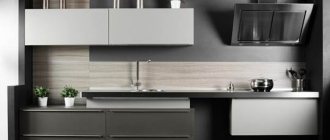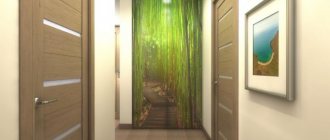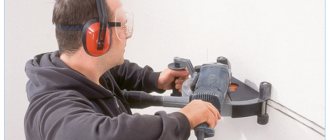When starting renovations in a house or apartment, starting the final decoration of the premises, the owners spend a long time and lovingly choosing materials. They carefully weigh the pros and cons, evaluate durability, practicality, and aesthetic qualities. After all, wall coverings are usually done for a long time. Major repairs are undertaken no more often than once every 10-20 years, and cosmetic repairs - once every 5-7 years. Owners require material that will meet high requirements:
- maintain its qualities for years;
- please with a presentable appearance;
- create a suitable atmosphere in the room.
Traditional types of finishing materials are not always suitable for homeowners.
- Wallpaper does not hide construction defects in walls well. Paper varieties quickly tear, fade, and cannot be washed. In addition, in a moisture-saturated atmosphere, the edges of the canvases begin to peel off.
- Plain painting with enamel, acrylic or latex paints may seem boring and is not suitable for all interior designs. In addition, such a coating requires perfectly smooth walls, without cracks, chips, or waves.
- Decorative or simple plaster, with the proper imagination and creative approach, is an excellent solution that opens up a lot of possibilities. However, it is not without its drawbacks.
That is why modern interior design masters recommend taking a closer look at a unique finishing material – wood.
Benefits of using wooden slats
The design of a living space is largely determined by the qualities and properties of the chosen finishing material.
Wooden slats are especially popular among owners of their own apartments due to a number of advantages:
- Wood is an environmentally friendly material that does not contain harmful impurities, toxic substances, or caustic resins.
- For the production of decorative materials, only acrylic varnish and stained glass paints are used, which do not cause an allergic reaction or a number of diseases.
- Slats allow you to create a geometrically correct space, giving the room a kind of symmetry and organization.
- The wooden parts have a pleasant natural color, so the buffels look very organic in the interior.
- With proper pre-treatment, wood becomes resistant to moisture and sudden temperature changes. If there is a protective acrylic layer, the slats can even be wiped with a damp cloth, cleaning them from accumulated dust.
- In practice, such finishing materials are used not only for wall decoration, but also for zoning in the house. For example, a row of wooden slats can serve as a partition between the kitchen and living room in a studio apartment. With the help of this material it is possible to organize a children's bedroom for two children, especially of opposite sexes.
- The advantages of wood include its versatility of use, since wood goes well with all types of finishing materials, for example, brick, stone, plaster.
The slatted design allows owners to hide all existing imperfections on the walls (grooves, rough irregularities, protrusions, remnants of the old coating that could not be removed).
In addition to all the obvious advantages, the low cost of wooden slats should be highlighted, which often determines the buyer’s choice.
Main and auxiliary tools
The main tools for applying the mixture are:
- trowel;
- construction mixer;
- spatulas of different shapes and sizes;
- masking tape;
- rubber rollers;
- brushes of different shapes;
- building level;
- mixing containers;
- rulers;
- perforator;
- sponge;
- a ladle for transferring the solution to the panel;
- rule;
- ironer;
- clean cloth.
To imitate various wooden bases, you will additionally need a choice of spatulas with a serrated edge, a rubber stamp, a stiff brush, a decorative roller for wood, a silicone stamp to imitate wooden boards, a fluted brush, a palette knife, etc.
The list of tools may vary depending on the design solution, type of base, wall panel materials, and technology for applying the composition.
Disadvantages of using slats
Unfortunately, even such a universal material is not without its drawbacks:
- Dust often accumulates between adjacent elements, which can be difficult to get rid of.
- Purchasing a low-quality product can lead to rapid deterioration of the finishing material. The reason for this may be the harmful effects of moisture, wood rotting or the development of pathogenic fungi.
- Wood is not used in a number of interior styles, for example, high-tech.
You should always remember that the slatted design will visually reduce the room. For this reason, wooden slats are not suitable for small bedrooms, children's rooms, and living rooms.
Secrets of successful room design
To create an attractive room design, you should consider some nuances:
- The direction of laying the lamellas.
The vertical arrangement visually raises the ceiling. Horizontal slats visually increase the space.
- Color. In small rooms, the lightest types of wood should be used. Dark colors will be psychologically oppressive in small rooms.
- Surfaces covered with wooden slats can themselves accentuate attention, or be used to highlight some other architectural element. For example, an arch or an original window.
- Slatted walls go well with niches and shelves.
- Wooden buffels soften the transition between different finishes. They provide a smooth transition from floor to wall, harmonizing with laminate or parquet.
- Slatted interiors make it possible to use a variety of lighting.
Types of slats by material of manufacture
Modern finishing materials are not always made from solid wood, often using chipboard or MDF panels to make them.
Each of these materials has a number of features and rules of care at home:
- Wooden slats are made of wood species such as oak, ash, beech, Karelian birch, and acacia. You should immediately abandon slats made from coniferous trees, since their wood is very soft and very sensitive to moisture. The resulting materials have a beautiful natural pattern and color that fits well into the interior of the room.
- Cheaper are slats made from chipboard panels. This material is a slab of pressed wood chips coated with a layer of varnish. Such slats have sufficient rigidity and hold their shape well. Unfortunately, when working independently, the material is difficult to process with cutters and emboss an image on the surface.
Today, another type of wooden slats is known, which are made from MDF panels. Such materials have strength in no way inferior to solid wood.
The cost per cube of finishing material is not much lower than for solid wooden slats.
Among the disadvantages, it should be noted that MDF is susceptible to sudden temperature changes, at which the surface of the slats can undergo deformation.
Coloring
Of course, creating texture is the most labor-intensive task in wood finishing. However, painting the plaster is the final stage of finishing. Therefore it must also be of high quality.
Before painting, a primer is applied to the surface with a brush along the wood lines, colored in the desired tone. The dye used is water-soluble.
The best way to convey the richness and depth of the natural color of wood is with translucent compounds, applying layer after layer of compounds of different shades. To obtain a budget coloring composition, you need to mix sequentially (with stirring after adding each next component) the following components:
- a little primer
- color scheme of the desired tone,
- white water-based paint,
- some dry wallpaper glue.
The mixture is applied with a brush, following along the fibers. Excess mixture is removed with a rubber spatula. After this base layer has dried, you can apply a composition with a different shade. The paint for subsequent layers is made without wallpaper glue and primer - only water-based emulsion with dye.
There are many options for coloring and coloring compositions. Here, as they say, dare and create. Just try it first on “experienced plots”.
Material selection rules
In modern warehouses and stores there is a huge variety of wooden slats, different in thickness, length, color, and used for the production of the base.
There are certain criteria that require detailed attention from the home owner:
- In practice, the length and width of the slats from which the composition will be made on the wall or between adjacent rooms is important.
- Upon careful inspection, you can notice traces of exposure to pests, dampness and rot, and mold. The buyer should also be interested in chips, cracks, and pinholes, which may indicate improper storage of the material.
- You can ask the seller or supplier about the availability of pre-impregnation of the slats with an antiseptic and antifungal composition.
- The color of the material is also important for creating a certain interior style.
You should definitely find out what type of wood the slats are made of. There are known cases of cross-allergic reactions to certain products and certain types of wood (for example, sunflower oil and birch), which should also be taken into account by the home owner.
Box effect
This bedroom from an apartment in Moscow actually looks like a jewelry box. This effect is created due to the fact that both the floor and the walls are finished with warm wood. Different types of wood are used for surfaces - this helps make the interior rich and not boring.
Apartment in Moscow in one of the new residential complexes. The comfort in the bedroom is created with several touches: an abundance of wood, a comfortable bed, a fur blanket.
Author of the project: Alexandra Fedorova. Photo: Ilya Ivanov.
Apartment in Moscow in one of the new residential complexes. The comfort in the bedroom is created with several touches: an abundance of wood, a comfortable bed, a fur blanket.
Author of the project: Alexandra Fedorova. Photo: Ilya Ivanov.
Interior finishing options
For each of the living rooms there are many interesting options for the arrangement of wooden slats:
- In the dining area, this can be an original partition to divide the kitchen into clean and work areas.
- Also, within the dining room, one of the walls is finished using slats located along the vertical axis.
- In the bedroom, using a slatted structure, you can decorate the wall above the head of the bed.
A similar composition looks very interesting in a residential attic, where the slats have an inclined direction. Or you can decorate the wall along which the steps to the second floor run.
